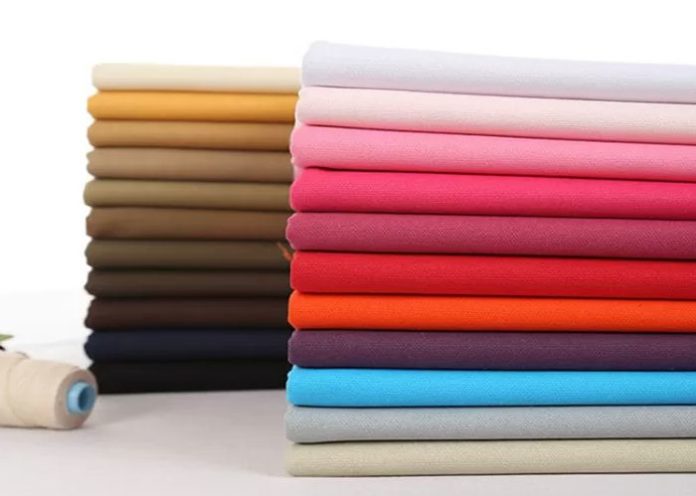
Colorfastness to rubbing is one of the fundamental properties that need to be tested to tell the color quality of the textile. For different market requirements, you will find the similarity of the principle, but the details are not the same.
9 Testing Standards
| 1 | ISO 105— X12:2016 | Textiles —Tests for colorfastness — Part X12: Colour fastness to rubbing |
| 2 | CAN/CGSB 4.2 No.22—2004 | Textile Test Methods – Colourfastness to Rubbing (Crocking) |
| 3 | GB/T 3920—2008 | Textiles–Tests For Colour Fastness–Colour Fastness To Rubbing |
| 4 | AS 2001.4.3—1995(R2016) | Methods Of Test For Textiles – Colourfastness Tests – Determination Of Colourfastness To Rubbing |
| 5 | AATCC 8—2016 | Colorfastness to Crocking: Crockmeter Method |
| 6 | JIS L0849:2013 | Test methods for colorfastness to rubbing |
| 7 | ISO 105-X16:2016 | Textiles — Tests for colorfastness — Part X16: Colour fastness to rubbing — Small areas |
| 8 | AATCC 116—2013 | Colorfastness to Crocking: Rotary Vertical Crockmeter Method |
| 9 | GB/T 29865—2013 | Textiles–Tests For Colour Fastness–Colour Fastness To Rubbing–Small Areas |
To conduct a color fastness to rubbing the test, you will use equipment called crock meter, which comes with three different types: Parallel reciprocating, bridge, and rotary friction. Crockmeter – Electronic Mode to determine the color fastness of textiles to dry or wet. This Electronic Crockmeter complies with ISO 105×12/D02, AATCC 8/165 testing standard, etc. In the crocking test, a reliable Crockmeter plays a vital role in the repeatable and reproducible results. Click here for more information. the testing procedure is very similar
The testing procedure is very similar. First, the standard white crocking cloth is clamped on the rubbing head. Under a fixed weight pressure, the white crocking fabric (both dry and wet with water) will be rubbed against the test specimen under testing conditions defined in specific testing standards: the number of frictions, and the stroke. After the friction cloth sample is dried, the standard stained gray sample card is used to evaluate the staining degree of the conflict white cloth under a color lightbox.
The Electronic Crockmeter provides a labor-saving way to determine the amount of color transferred from the surface of colored textile materials and other dyed materials to another surface by rubbing. Designed with a stable slide offers you even testing results, and the weight which produces 9N loading is changeable to alternative weights Crockmeter Fitted with a pre-determined electronic counter for strokes up to 999,999 times.
As we mentioned, different testing conditions like the moisture or humidity of the test samples and the crocking stroke, speed, the pressure applied, and the rubbing area size will all lead to varied testing results.

1. Crocking Stroke
Parallel reciprocating(104±3 )mm or(103±5)mm;The bridge type is the Japanese standard for rubbing fastness; The type II rubbing color fastness tester has a reciprocating stroke of 100mm. Rotating friction is fixed above the sample and revolves around the center of the circle. The contact surface is only the area of a circular rubbing head.
2. Speed and Time
Parallel reciprocating: 60 times/min, one time per second, ten times, total 20s;
Rotary type: 1 circle per second, entire of 10 circles for the 20s;
Bridge type: 30 times per minute, one time per two seconds,total 100s for 200s duration.
Among the nine standards, the strictest one will be JIS (Japan), feature in 10 times duration time to parallel reciprocating and rotary type, same textile applied to these standards will result in more mediocre performance.
3. Size of rubbing head and pressure applied
(1) For reciprocating friction standards, this may help you; American Standard – AATCC 8-2013, Australian Standard – AS 2001.4.3-1995, Canadian Standard – CAN / CGSB-4.2 NO.22-2004, the diameter of the cylindrical friction head is (16 ± 0.1 ) mm, area 203.5mm2, pressure 9N; international standards ISO 105-X12: 2001 and GB / T 3920-2008, with two friction heads, one is a square friction head with a size of 19mm x 25.4mm, an area of 482.6mm2, The other is a cylindrical friction head with a diameter of (16±0.1) mm, an area of 203.5 mm2, and a pressure of 9N.
(2) Bridge Friction Standard: The Japanese standard JIS L0849: 2013 has a different friction head with a 20 x 20mm square and a 45mm surface radius.
(3) Rotary friction standards: International standard ISO 105-X16: 2001, American standard AATCC 116-2013, Chinese national standard GB / T 29865-2013, these standard friction heads are also cylindrical friction head diameter (16 ± 0.1) mm The area is 203.5mm2, but the pressure is 11.1N.
4. Sampling direction of the specimen
Reciprocating rubbing standards except for the American AATCC standard are 30-degree oblique sampling; all samples are taken in the warp and weft directions; the rotating friction standard is a small area fixed origin friction, no need to cut and sample.
5. Moisture content

Both the reciprocating and the rotating friction in the American AATCC standard require that the moisture content of the wet crocking cloth is 65%.
International ISO standards and China’s national GB standards require a moisture content of 95% to 100%. Still, if the moisture content seriously affects the rating, other moisture content can be used; for example, the commonly used moisture content is (65 ± 5)%. Canadian CAN / CGSB standards, Australian AS standards and Japanese JIS bridge friction standards require 100% water content.
The more the moisture content, the higher the wetness of the wet rubbing cloth, and the dye is usually easily hydrolyzed in the wet state, so the more significant the moisture content, the lower the damp rubbing fastness result. It can be seen from the experimental data (slightly) that the wet rubbing fastness results of different methods differ by 0.5 to 1.5, which is a big difference, so the correct test method must be selected to judge the rubbing fastness of textiles. The differences and causes of wet rubbing fastness are analyzed and compared from several different angles.
Five Influencing Factors that define rubbing color fastness quality
- Influence of fabric surface morphology.
- Influence of fabric structure.
- Influence of Reactive Dye Chemical Structure
- Effect of reactive dyeing degree
- Effect of softener



















